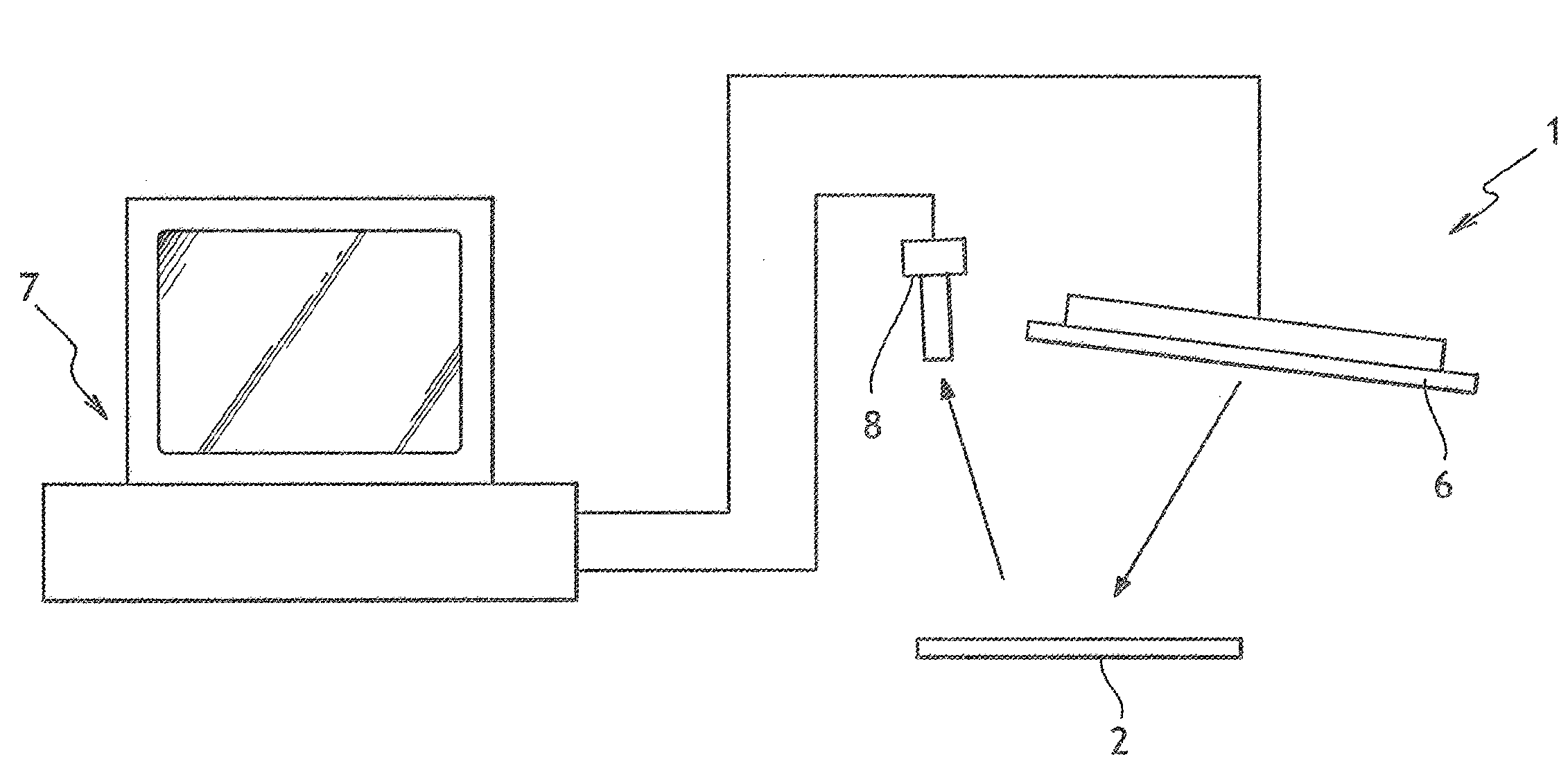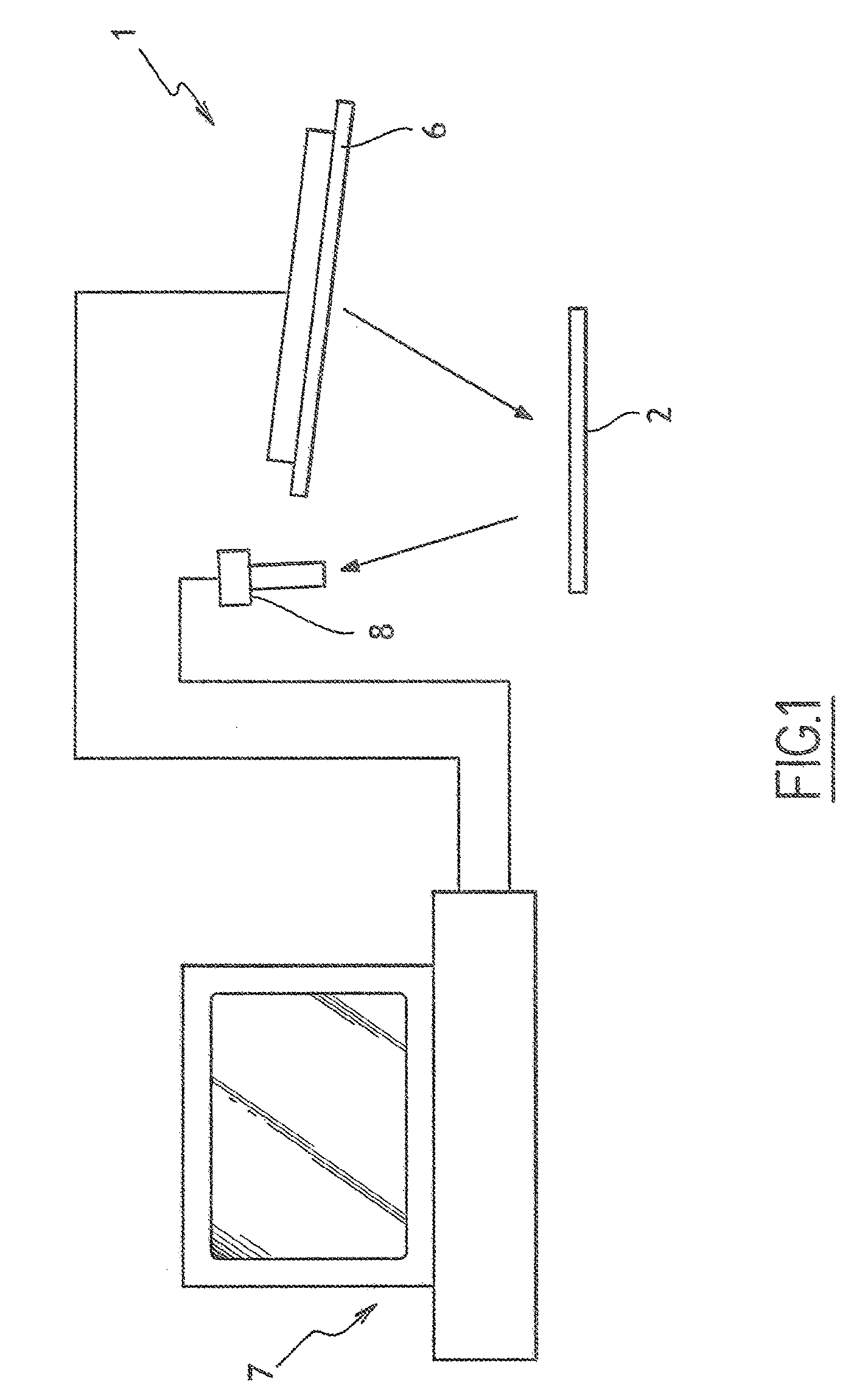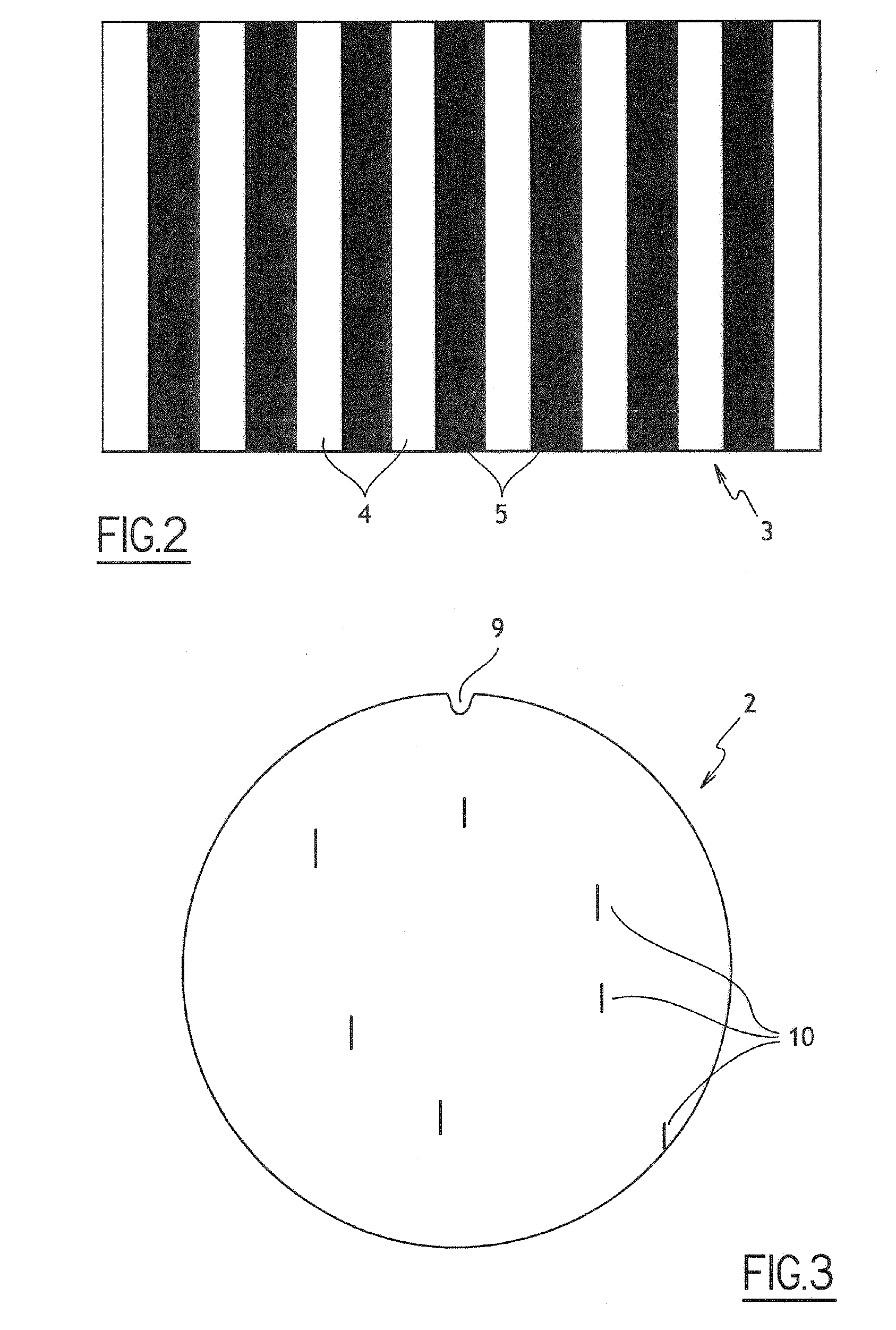Method for detecting surface defects on a substrate and device using said method
- Summary
- Abstract
- Description
- Claims
- Application Information
AI Technical Summary
Benefits of technology
Problems solved by technology
Method used
Image
Examples
Embodiment Construction
[0059]With reference to FIGS. 1 and 2, the device according to the invention comprises means of projecting 1 a pattern 3 composed of an alternation of fringes 4 of continuous light and dark bands 5, onto a substrate 2, said pattern 3 being shown in FIG. 2.
[0060]The substrate 2 is positioned on an annular type support not shown in the figures, or of the type consisting of three or four bearing points for example for a substrate with a diameter of 300 mm.
[0061]In this special example embodiment of the invention, it can be seen that the light fringes 4 and the dark bands 5 are approximately equal in width; however, it is quiet obvious that the light fringes 4 and the dark bands 5 could have arbitrary corresponding width, without going outside the framework of the invention.
[0062]These projection means 1 are composed of a screen 6, for example such as a plasma or LCD (Liquid Crystal Display) screen, positioned above said substrate 2 close to the normal to said substrate 2, connected to ...
PUM
 Login to View More
Login to View More Abstract
Description
Claims
Application Information
 Login to View More
Login to View More - R&D
- Intellectual Property
- Life Sciences
- Materials
- Tech Scout
- Unparalleled Data Quality
- Higher Quality Content
- 60% Fewer Hallucinations
Browse by: Latest US Patents, China's latest patents, Technical Efficacy Thesaurus, Application Domain, Technology Topic, Popular Technical Reports.
© 2025 PatSnap. All rights reserved.Legal|Privacy policy|Modern Slavery Act Transparency Statement|Sitemap|About US| Contact US: help@patsnap.com



